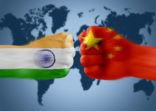By comparison, the JP Morgan team assumes that South Korea is not a high-growth economy and stocks that have performed well historically could underperform in the future, Ng said.
The team, led by John Cho and David Choi, adopts a contrarian approach when selecting stocks. They prefer companies that are out-of-favour, but which still retain core competencies and are expected to post a turnaround performance within 12-18 months. The fund, which usually holds 30-60 stocks, is less concentrated than Invesco’s. In addition, it focuses on the industrial and finance sectors, which mainly consist of large-caps.
A snapshot of portfolio allocation:
| Invesco fund | JP Morgan fund | |
| Launch | 5 Nov 1996 | 11 Dec 1991 |
| AUM | $314m | $305.9m |
| Number of holdings | 25-30 | 30-60 |
| Top sectors | Consumer staples – 41.9%
Consumer discretionary – 22.8% Healthcare – 19.1% Information technology – 4.6% Industrials – 4.4% |
Finance – 19.0% Chemicals – 13.0% Electronic & electronic equipment – 12.1% Distribution industry – 10.5% Services – 9.5% |
| Top holdings |
Dongsuh – 8.4% Hanssem – 8.3% Ottogi – 7.9% Amorepacific Group – 7.7% Hyundai Greenfood – 5.1% |
Samsung Electronics – 9.2% Shinhan Financial Group – 4% Korea Electric Power Corporation – 4% KB Financial Group – 3.3% KCC Corporation – 3.1% |
Source: FE Analytics, Invesco, JP Morgan
Fund performance
As Invesco’s holdings are not cyclicals, it is possible that the fund will deliver better performance during a downcycle, Ng said. However, the fund’s performance can appear lackluster during cyclical uptrends.
The JP Morgan fund holdings have comparatively less deviation from the benchmark so its performance is closer to the movements of the KOSPI. Market timing skills and ground intelligence are extremely important to the JP Morgan fund. In the absence of these, the fund can underperform, Ng said.
















